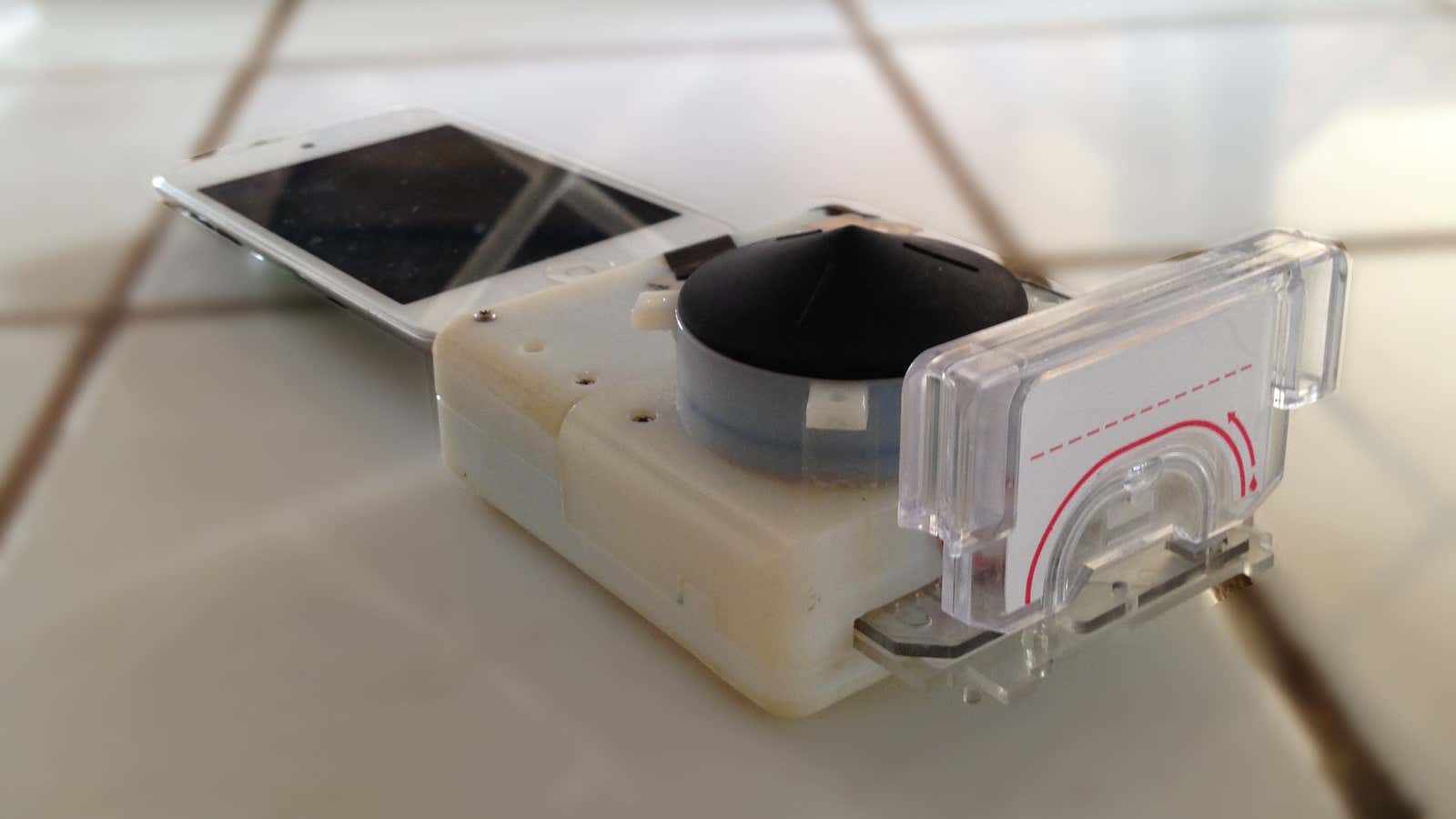Researchers at Columbia University have developed a gadget that can test for syphilis and HIV via a smartphone or tablet.
Here’s how it works: The “dongle” device takes a prick of blood and tests it to see whether there are a higher-than-normal number of the antibodies that fight HIV and syphilis in the blood. That immune system reaction indicates that the patient is positive, explains Wan Laksanasopin, a biomedical engineering PhD student at Columbia who helped develop the device.
The dongle attaches to any smartphone or tablet through the audio jack, and the device’s app reads the results, giving a diagnosis in about 15 minutes, Laksanasopin tells Quartz. (The team has so far only developed an iOS app for Apple devices.) The app provides directions to the health care worker administering the test, as well as the results.
Offering a simple, mobile method to test for HIV and syphilis could make a big difference in developing countries, particularly in helping to prevent mother-to-child transmission of HIV. Syphilis can put a child at greater risk for HIV, and for pregnant women it can cause birth complications or neonatal death, says Laksanasopin.
The mobility of the device means that health care workers can go door to door to provide tests, instead of requiring people to come to clinics, which patients may avoid for reasons ranging from stigma against HIV to transportation difficulties.
The dongle costs $34 to make (much less expensive than other options), while the cartridge needed for each test costs $2, Laksanasopin says.
While promising, the dongle still has some bugs, and isn’t ready for widespread use just yet. The researchers tested the device with 96 patients in Rwandan clinics and testing centers, and found that it sometimes results in false positives, Laksanasopin said. The results of those tests were published in the journal Science Translational Medicine.
This isn’t the first attempt to develop HIV-testing technology for remote places. The US National Institutes of Health funded the development of a device that uses a chemical reaction to test blood samples for HIV, for example, though that process can take longer than an hour.
